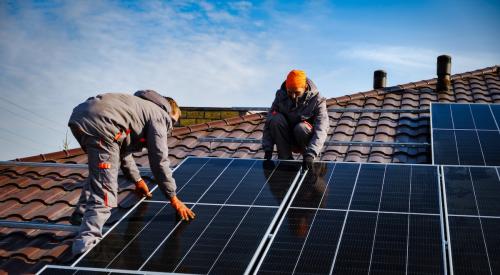A recent study found that rising global temperatures could decrease the efficiency of current solar technology, CityLab reports.
Currently, solar photovoltaic technology makes up 55 percent of all renewable-power capacity, and it will continue to boom, according to a 2018 report on the state of renewable energy. It’s unlikely the planet will become too hot for solar panels to function altogether any time soon. But a recent paper out of the Massachusetts Institute of Technology did find that for every degree Celsius rise in temperature, the voltage output of solar modules declines by an average of 0.45 percent. Under one warming scenario projected by the UN’s Intergovernmental Panel on Climate Change, which estimates global temperature to rise by 1.8 degree Celsius by 2100, that comes out to a 1 percent reduction.
The report calculates that the median reduction will be about 15 kilowatt hours (kWh) per installation, but in some regions, where temperature rise will be greater, as much as 50 kWh. “If you look at the maps [in the report], there are places heating by a lot more than 2 degrees—places that hit close to home,”says MIT’s Tonio Buonassisi, who co-authored the study with fellow photovoltaics researcher Ian Marius Peters. These regions include the southern United States, southern Africa, and Central Asia.
A 1 percent drop in solar energy generation per panel might not seem like much, but if you take into account all the panels across the globe, it adds up. Forecasting solar energy demand is tricky, says Peters, but consider the assumption that solar will supply at least 50 percent of energy demand by 2100, and that by then, there will be billions of solar panels with a total installed photovoltaic capacity of some 20 terawatts. Just 1 percent of that could be enough to meet the energy demand of an entire country. “A small effect on something huge can still have an appreciable impact,” Peters says.












